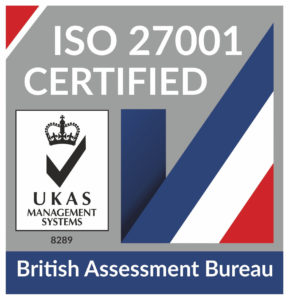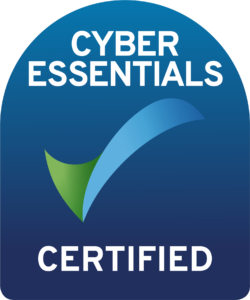
HaloITSM Guides
Documentation to assist with the setup and configuration of the HaloITSM platform
SolarWinds Orion Integration
In this guide we will cover:
- Prerequisites
- Configuring the Integration
- Receiving Alerts
- Updating Alerts in SolarWinds Orion
Related Guides:
Prerequisites
You must be using version 2020.2 or later of SolarWinds Orion to use this integration.
Configuring the Integration
To enable the SolarWinds Orion integration, navigate to Configuration > Integrations, and enable the module using the plus icon in the top right hand corner of the menu icon. Once the module has been enabled, click the menu icon to begin configuring it.
Trigger and reset actions can be configured for each alert that is setup in SolarWinds Orion. These trigger and reset actions can send alert information to the Halo API, allowing you to create and resolve alerts automatically whenever they are triggered or reset in SolarWinds Orion.
In the Halo setup screen for the integration, the details required to configure a trigger action and reset action are displayed. It is not possible to deviate from the samples provided.
Fig 1. Trigger and reset actions.
In the "Body to Post", the following fields can be modified to include whatever information you wish:
- summary - this value will be the subject of the ticket that is created
- details - this value will be the body of the ticket that is created
- team - the name of a team in Halo that you would like to assign the new ticket to
- agent - the name of the agent in Halo that you would like to assign the new ticket to
- asset_value - a unique identifier stored against assets in Halo, so assets can be correctly linked to tickets
Underneath the example actions, you can enable authentication for the actions. By choosing basic authentication from the drop down, a username and password field will be displayed. The password field will only be displayed once, so be sure to keep it safe so it can be accessed again if needed. By generating a new password, the existing password will be rendered unusable. This username and password field can be added to the trigger and reset actions when you configure them in SolarWinds Orion.
The following article describes how to configure a trigger and reset action for an alert in SolarWinds Orion: Click Here.
If errors are encountered when testing the alert post, more information can often be gained from the SolarWinds Orion error logs which can be found on the SolarWinds server at the following location: C:\ProgramData\Solarwinds\Logs\Orion\ActionsExecutionAlert.log
Receiving Alerts
Once a trigger and/or reset action has been configured in SolarWinds Orion, some additional options must be configured in Halo.
Fig 2. Alert and asset matching configuration.
Firstly, if you would like to link assets to the tickets that are created, an asset matching field can be specified. This field must store the unique identifier that will be contained in the asset_value property of the trigger action. When a trigger action sends a request to Halo, a lookup is performed to find an asset that contains the value of the asset_value property. If an asset is found, it will be linked to the ticket that is created.
There is also an option to choose what ticket type new tickets should be created as, and also an option to choose a which user the new ticket should be assigned to.
Updating Alerts in SolarWinds Orion
When a ticket has been created from a SolarWinds Orion alert, the alert can be acknowledged from within the ticket in Halo. Closing a ticket in Halo that is linked to an alert will clear the alert in SolarWinds Orion. This will suppress any configured reset actions from occurring, but if the trigger condition for the alert is met again, the alert will be triggered again.
This functionality requires you to run the Halo Integrator directly on your SolarWinds Orion server to communicate with the SolarWinds Orion API. This can be enabled within the integration setup screen in Halo.
Fig 3. Enabling the integrator.
Once enabled, you need to specify the local IP address or host name of the SolarWinds Orion server. A default username and password should also be chosen, which will be used to make requests to SolarWinds Orion. The default username and password values can be overridden per technician on the details tab on the technician configuration screen. Overriding the default values means that when a technician acknowledges/clears an alert in Halo, the alert is updated by the correct technician in SolarWinds Orion. For example, if Joe Bloggs acknowledges an alert through Halo but does not have any override credentials specified, then the alert will not show as being acknowledged by Joe Bloggs, but instead by the default user.
Halo Integrator
From v2.196+ you will have a choice of integrators that can be used to schedule this import, allowing you to choose between using the Halo integrator application (hosted by you) or the Halo DB integrator (hosted by you). The primary difference between these choices is how your password will be exposed. The Halo integrator application will access your Halo database, including obtaining your password, through the API, which means the password for the integration will need to be accessible via the API. Whereas the Halo DB integrator has the Halo API built into it and connects directly to your database. For more information on the Halo integrator application and the Halo DB integrator check out Halo DB integrator.
Your choice of integrator will impact how the password used for the integration is exposed, whether it is accessible via the API or not, but this will also be determined by your chosen password storage method.
Fig 4. Integrator selection
When the 'Halo Integrator' is selected you will still be able to use a Halo DB integrator to schedule imports in addition to this integrator. However, if you have selected 'Halo DB integrator', the Halo integrator will not be able to run for this integration.
Note: On premise customers will not be able to use the Halo Integrator.
Once you have chosen your integrator you will need to choose the method used for password storage in the 'Password Storage Method' field.
Fig 5. Password storage method
Halo- When this method is chosen your password will be stored by Halo, it will be accessible via Halo's API if the Halo Integrator is chosen as the integrator too. If using the Halo DB integrator your password will not be accessible via the API.
Azure Key Vault - When this method is chosen your password will be stored by Azure key Vault, it will not be accessible via Halo's API if the Halo Integrator is chosen as the integrator too. If you would like to use this method of storage you will need to configure a key vault in the Azure Key Vault integration. For information on setting up the Azure Key Vault integration, check out our guide: Azure Key Vault. Once you have configured a Key Vault in Halo you will be able to choose which Key Vault to store the password in.
Fig 6. Choose Key vault to store password in
Recommended:
If you are using the 'Halo integrator' to schedule imports we recommend using Azure Key Vault as the password storage method as this will ensure your password is not accessible via the API. If using the Halo DB integrator you can use Azure Key Vault to store passwords for increased security, however, even when Halo is used as the password storage method the password will not be accessible via the API.
If you have multiple Halo integrator applications you may wish to restrict which of these have access to this integration. By default all client IDs will be able to access on-premise integrations, however, this can be disabled, allowing you to whitelist which client IDs can access the integration.
To do this head to configuration > advanced settings > disable 'Allow all client IDs to access all on-premise integrations which use the Halo Integrator'.
Fig 7. Allow all client IDs to access all on-premise integrations which use the Halo Integrator
Now, on the integration setup page in Halo, you will have an option to add in the client IDs you would like to whitelist for this integration.
Fig 8. Allowed client IDs for integration
Here, enter the client IDs for the applications set up to authorise the connection between your Halo instance and your Halo Integrator. Only the integrators authorised using these client IDs will be able to access this integration.
Now, when viewing a ticket created from an alert, a new section will appear on the sidebar for the linked alert, showing the name of the alert that has been triggered to create the ticket and also a button to acknowledge the alert.
Fig 9. Related alert information.
Clicking the "Acknowledge Alert" button will open a popup window allowing you to add a note to your acknowledgement. Once saved, this information will be saved as an action to the ticket. The Halo Integrator should then be run in the background and this acknowledgement action will be synced to SolarWinds Orion. The Halo Integrator will also process any closure actions that are added to the ticket, and will automatically close the alert in Halo.
If a reset action is triggered and sent to Halo, then the ticket will be automatically resolved for you.
Popular Guides
- Asset Import - CSV/XLS/Spreadsheet Method
- Call Management
- Creating a New Application for API Connections
- Creating Agents and Editing Agent Details
- Departments and Teams
- Halo Integrator
- Importing Data
- Multiple New Portals with different branding for one customer [Hosted]
- NHServer Deprecation User Guide
- Organisation Basics
- Organising Teams of Agents
- Step-by-Step Configuration Walk Through







